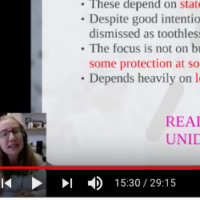For teaching in the time of coronavirus
Due to the the spread of novel coronavirus, more and more of us educators are [rightly] having to cancel classes. In many cases this means a quick transition to online learning with little support or resource. Yesterday Lewis Borck started an open spreadsheet of online archaeological resources for teachers: what a spectacular idea. Today I am going to share some lectures for anyone to use with their newly-online teaching.
Quick context: for the past few years I have been teaching three full master’s modules totally online: Antiquities Trafficking, Art Crime, and Repatriation Recovery Return. For each of these I have recorded about 20 hours of traditional lectures designed for online viewing and broken up into 15 to 20 minute segments. I am going to share with you two YouTube play lists that constitute one lecture each from “Antiquities Trafficking”. I also have lectures from “Art Crime” and “Return” available if that is more what your course needs (email me about that). If you use these for your class, please explain to the students that they were recorded for a different module so some of what I say might to the assignments and requirements of that class.
Also: if your class has questions or comments, I’m happy to answer. We could record a Q&A depending on your timezone. I have a baby that now has to stay home from nursery into the foreseeable future so I’m best after 7pm Central European Time for video. Email me.
Lecture 1: Introduction to Antiquities Trafficking. Who owns the past? Where does the antiquities market come from? What is the structure of the market? (Note: it starts with “video 2”, that is because video 1 was all about about essay due dates and not plagiarising.)
Lecture 2: Subsistence Economies, Artefact Looting, and Communities. Considering the question are artefact looters criminals or are they victims?
